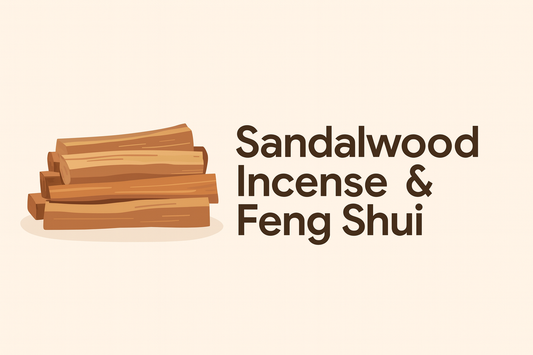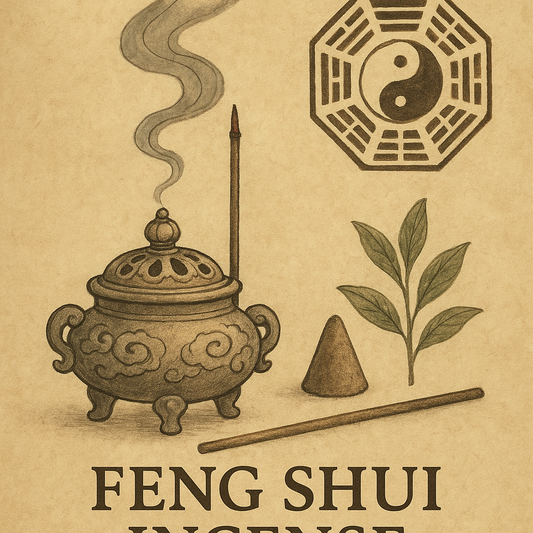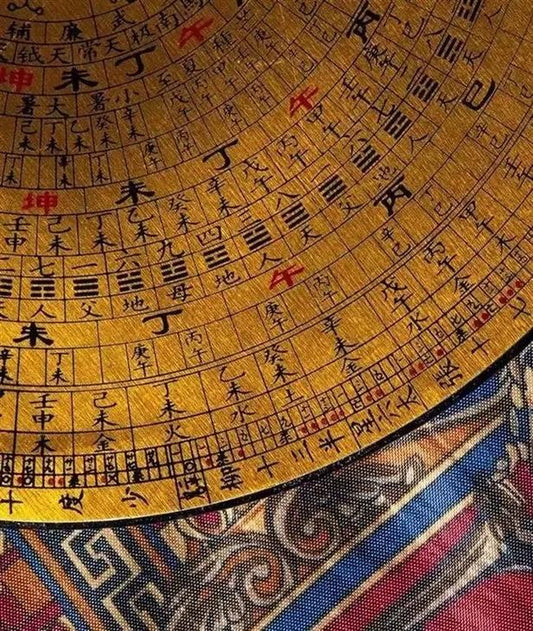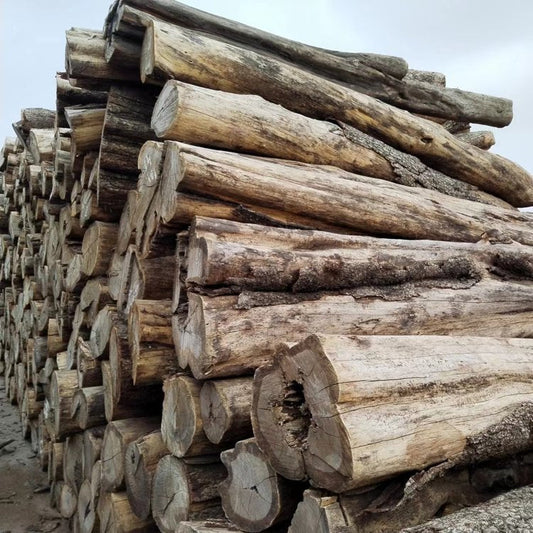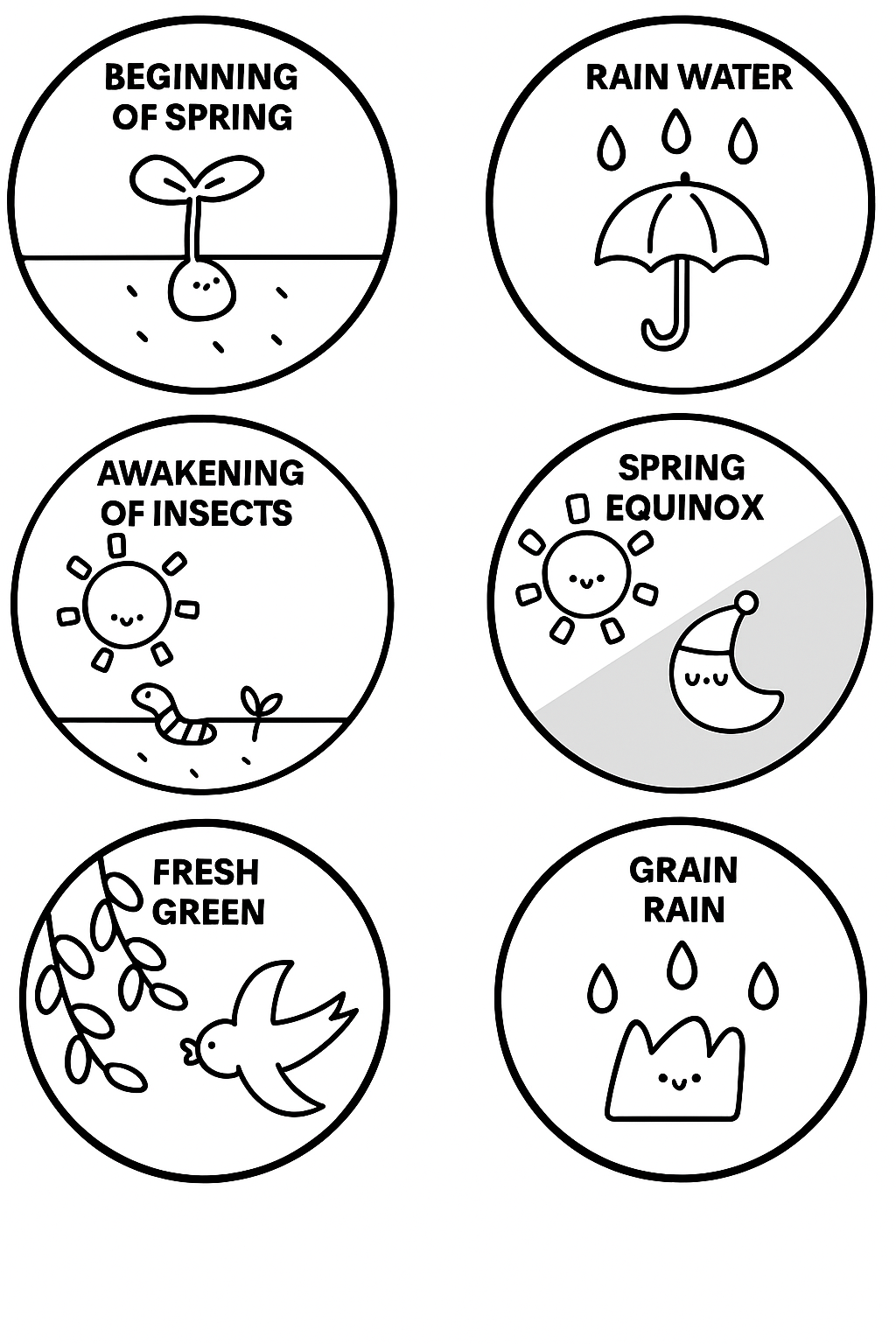
What is 24 Solar Terms? Aligning Life with Nature's Rhythm
Introduction
The 24 Solar Terms, as the crystallization of the ancient wisdom of the Chinese nation, constitute a knowledge system and living practice formed based on the sun's annual motion. They divide the year into twenty-four specific points in time, with each solar term corresponding to a particular position of the sun on the ecliptic, accurately reflecting changes in climate, phenology, and natural phenomena. This is not only a product of China's agrarian civilization but also a vivid embodiment of the "Heaven-Human Unity" philosophy, guiding people's agricultural production, daily life, and even health preservation. In 2016, the 24 Solar Terms were inscribed by UNESCO on the Representative List of the Intangible Cultural Heritage of Humanity, and their value has gained global recognition.
The following will provide a detailed introduction to these twenty-four solar terms, outlining their main characteristics and significance.
-
Lichun (Beginning of Spring)
-
Overview: The first of the 24 Solar Terms, marking the beginning of spring. Winter departs and spring arrives, all things begin to stir, signaling the thawing of the earth, the awakening of hibernating insects, and fish becoming active beneath the ice.
-
Significance: It is the starting point for agricultural planning, and people often have customs like "biting spring" (eating spring foods) to pray for a bountiful harvest.
-
Yushui (Rain Water)
-
Overview: Rainfall begins to increase, temperatures rise, and ice and snow melt, marking the beginning of the rainy season.
-
Significance: Crucial for crop growth, there is a folk custom of married daughters returning to their parents' homes to visit and express gratitude.
-
Jingzhe (Awakening of Insects)
-
Overview: Spring thunder begins to rumble, awakening hibernating animals. The earth starts to regain vitality, peach trees blossom, and orioles sing.
-
Significance: It signals rising temperatures and the beginning of crop growth, making it an important time for spring plowing.
-
Chunfen (Spring Equinox)
-
Overview: Day and night are of equal length, the climate is moderate, the sun's ecliptic longitude is 0°. Swallows return, thunder sounds, and lightning begins.
-
Significance: It symbolizes balance and harmony. A farming proverb states, "Early Spring Equinox, late Frost's Descent, Cold Dew is the right time to sow wheat."
-
Qingming (Pure Brightness)
-
Overview: Temperatures rise, rainfall increases, the weather warms, plants turn green, the scenery is fresh and clear. Paulownia trees blossom, field mice transform into quails, and rainbows appear.
-
Significance: It is an important agricultural season and also a traditional festival for sweeping tombs and honoring ancestors. A farming proverb says, "Before and after Qingming, plant melons and beans."
-
Guyu (Grain Rain)
-
Overview: Rainwater is abundant, beneficial for grain growth. Temperatures rise rapidly, duckweed begins to grow, cuckoos preen their feathers, and hoopoes descend to mulberry trees.
-
Significance: It is a critical period for sowing various grains, signaling the end of cold weather and a rapid increase in temperature.
II. Six Solar Terms of Summer: Prosperity and Heat
Summer is the season when Yang energy is most abundant and all things flourish, characterized by hot weather.
-
Lixia (Beginning of Summer)
-
Overview: Marks the beginning of summer. Temperatures rise, plants flourish, mole crickets chirp, earthworms emerge, and king melon grows.
-
Significance: People begin to bid farewell to spring and welcome summer, with customs like "tasting three fresh foods" and "weighing people."
-
Xiaoman (Lesser Fullness of Grain)
-
Overview: Summer crops begin to plump up but are not yet fully ripe. Plants begin to flourish, bitter herbs blossom, and withered grass dies.
-
Significance: It indicates that crops are entering the grain-filling stage, and temperatures rise significantly.
-
Mangzhong (Grain in Ear)
-
Overview: Grains with awns (like wheat) ripen and need to be harvested promptly. It is also the time for sowing late-season rice and other crops. Mantises are born, shrikes begin to sing, and warblers become silent.
-
Significance: It is the busiest farming season of the year, characterized by "summer harvest, summer management, and summer planting."
-
Xiazhi (Summer Solstice)
-
Overview: The longest daylight hours and shortest night in the Northern Hemisphere. Yang energy reaches its peak. Deer antlers shed, cicadas begin to chirp, and Pinellia ternata grows.
-
Significance: It is the time when Yang energy is most vigorous. Folk customs include eating noodles, zongzi (rice dumplings), and wontons. Wellness focuses on light, Spleen-strengthening, heat-clearing, and dampness-resolving foods.
-
Xiaoshu (Lesser Heat)
-
Overview: Enters the hottest period of the year. Warm winds blow, crickets move to walls, and eagles begin to learn hunting.
-
Significance: It marks the beginning of intense heat. Wellness requires attention to heatstroke prevention and cooling.
-
Dashu (Greater Heat)
-
Overview: The hottest period of the year. Decaying grass transforms into fireflies, the soil is moist and humid, and heavy rains often occur.
-
Significance: It is the period with the highest temperature and humidity of the entire year. Heatstroke prevention and dampness removal are key wellness priorities.
III. Six Solar Terms of Autumn: Convergence and Harvest
Autumn is the season when temperatures turn from hot to cool, and all things mature and converge.
-
Liqiu (Beginning of Autumn)
-
Overview: Marks the beginning of autumn. The weather turns from hot to cool, cool breezes arrive, white dew falls, and cicadas chirp.
-
Significance: It is the harvest season. Wellness follows the principles of "nourishing and gathering," with an emphasis on eating Yin-nourishing and dryness-moistening foods.
-
Chushu (End of Heat)
-
Overview: The intense heat of summer is coming to an end. Temperatures begin to drop. Eagles begin to hunt birds, heaven and earth begin to be solemn, and grains ripen.
-
Significance: It signals the fading of summer heat and the arrival of crisp autumn weather.
-
Bailu (White Dew)
-
Overview: Temperatures drop, and water vapor condenses into dew. The weather turns cooler. Wild geese fly south, swallows return to their nests, and birds begin to store food.
-
Significance: It marks the true beginning of cool autumn. A proverb says, "Do not expose your body in White Dew."
-
Qiufen (Autumn Equinox)
-
Overview: Day and night are of equal length. Yin and Yang are balanced. Thunder ceases, hibernating insects begin to seal their burrows, and rivers begin to dry up.
-
Significance: It is the midpoint of autumn and an important period for crop maturation and harvest.
-
Hanlu (Cold Dew)
-
Overview: Temperatures drop further, and dew becomes colder. Wild geese arrive as guests, sparrows enter the water and become clams, and chrysanthemums bloom yellow.
-
Significance: It signals the arrival of deep autumn. The weather gradually turns cold. A farming proverb says, "Do not expose your feet in Cold Dew."
-
Shuangjiang (Frost's Descent)
-
Overview: The weather gradually turns cold, and frost begins to form. Jackals begin to hunt, plants wither and turn yellow, and hibernating insects burrow down.
-
Significance: It is the last solar term of autumn, marking the transition from deep autumn to winter. There is a saying, "Tonifying in Frost's Descent is better than tonifying in winter."
IV. Six Solar Terms of Winter: Storage and Recuperation
Winter is the season when all things are stored, and vitality is latent, characterized by cold weather.
-
Lidong (Beginning of Winter)
-
Overview: Marks the beginning of winter. Water surfaces begin to freeze, the earth begins to freeze, and pheasants enter large bodies of water and transform into clams.
-
Significance: People begin to prepare for winter. Wellness focuses on storing essence and resisting cold.
-
Xiaoxue (Lesser Snow)
-
Overview: Snowfall begins, but the amount is not large. Rainbows disappear, the Qi of heaven and earth intertwine, and all things close off into winter.
-
Significance: It indicates a further drop in temperature and the beginning of the snowy season.
-
Daxue (Greater Snow)
-
Overview: Snowfall increases, and temperatures continue to drop. Pheasants stop chirping, tigers begin to mate, and Lythrum salicaria grows.
-
Significance: It marks the arrival of severe winter and is the period with the heaviest snowfall.
-
Dongzhi (Winter Solstice)
-
Overview: The shortest daylight hours and longest night in the Northern Hemisphere. The sun's ecliptic longitude is 270°. Earthworms curl up, elk antlers shed, and springs begin to flow.
-
Significance: In ancient times, it was considered a major festival, with the saying "Winter Solstice is as important as New Year." Northerners eat dumplings, while southerners often eat tangyuan (glutinous rice balls), symbolizing "completeness" and "reunion."
-
Xiaohan (Lesser Cold)
-
Overview: The weather rapidly reaches the coldest period of the year.
-
Significance: It is one of the coldest solar terms in winter. People need to pay attention to keeping warm and preventing cold.
-
Dahan (Greater Cold)
-
Overview: The coldest period of the year and the last solar term of winter.
-
Significance: It marks the end of severe winter and prepares for the arrival of Lichun.
Conclusion
The 24 Solar Terms, an ancient and ingenious calendrical system, are not only the crystallization of China's agrarian civilization but also a vivid embodiment of the Chinese nation's "Heaven-Human Unity" philosophical thought. They guide people's production and daily life with precise observations of phenology and climate change patterns, and are closely integrated with Traditional Chinese Medicine wellness theories, advocating a health philosophy of aligning with nature and nurturing body and mind. Through understanding and practicing the 24 Solar Terms, we can better perceive the rhythm of nature, adjust our own state, and thus achieve harmony and coexistence with nature, which also has profound guiding significance for modern people's health and life.
Table 1: Overview of the 24 Solar Terms: Climatic Features and Wellness Focus
|
Solar Term |
Solar Longitude |
Approx. Date |
Climatic Features & Phenology |
TCM Wellness Focus |
|
Spring |
Nourish Liver, Promote Yang Rising |
|||
|
Lichun (Start of Spring) |
315° |
Feb 3-5 |
East wind thaws, hibernating insects begin to stir, fish rise to the ice. Temperatures warm, all things sprout, Yang energy begins to rise. |
Nourish and protect the Liver, reduce sour and increase sweet, relax muscles and activate collaterals, regulate emotions.7 |
|
Yushui (Rain Water) |
330° |
Feb 18-20 |
Increased rainfall, rapid temperature rise, otters sacrifice fish, wild geese arrive, plants sprout. |
Regulate Spleen and Stomach, alleviate spring fatigue, pay attention to dispelling dampness.7 |
|
Jingzhe (Awakening of Insects) |
345° |
Mar 5-6 |
Weather warms, spring thunder begins, hibernating insects awaken, peach trees blossom, orioles sing. |
Replenish fluids, keep warm, adapt to changeable weather, prevent excessive Liver fire.7 |
|
Chunfen (Spring Equinox) |
0° |
Mar 19-22 |
Day and night are equal, warm and humid climate, swallows arrive, thunder sounds, lightning begins. |
Clear heat and detoxify, warm and tonify Yang Qi, prevent arthritis, maintain emotional balance.7 |
|
Qingming (Clear & Bright) |
15° |
Apr 4-5 |
Temperatures warm, Yang energy rises, paulownia trees blossom, field mice transform into quails, rainbows appear. |
Avoid tonifying, low-salt diet, alleviate high blood pressure, promote diuresis and dampness, nourish blood and relax tendons.7 |
|
Guyu (Grain Rain) |
30° |
Apr 19-21 |
Increased rainfall, beneficial for grain growth, duckweed begins to grow, cuckoos preen feathers, hoopoes descend to mulberry trees. |
Moderate warmth, eat more vegetables to regulate stomach and reduce fire, nourish and clear Liver, nourish eyes.7 |
|
Summer |
Nourish Heart, Clear Heat & Dampness |
|||
|
Lixia (Start of Summer) |
45° |
May 5-7 |
Weather gradually warms, plants flourish, mole crickets chirp, earthworms emerge, king melon grows. |
Nourish the Heart, drink more water to reduce heat and fire, nourish Yin fluids, diet according to Heart's needs. |
|
Xiaoman (Lesser Fullness) |
60° |
May 20-22 |
Plants flourish, summer grains begin to ripen but not fully, bitter herbs bloom, withered grass dies, wheat harvest approaches. |
Light and refreshing diet, clear damp-heat, prevent skin diseases.7 |
|
Mangzhong (Grain in Ear) |
75° |
Jun 5-7 |
Busy farming season, summer harvest, management, and planting, mantises are born, shrikes begin to sing, warblers become silent. |
Clear heat and reduce fire, sufficient sleep, exercise to increase vitality, cope with damp-heat induced sluggishness.7 |
|
Xiazhi (Summer Solstice) |
90° |
Jun 20-22 |
Yang energy is strongest, longest daylight, deer antlers shed, cicadas begin to chirp, Pinellia ternata grows. |
Light diet, strengthen Spleen, clear heat and dispel dampness, replenish fluids and vitamins, treat winter diseases in summer. |
|
Xiaoshu (Lesser Heat) |
105° |
Jul 6-8 |
Beginning of the hottest period, heat waves, occasional heavy rains, crickets move to walls, eagles learn to hunt. |
Decreased intestinal absorption, pay attention to food hygiene, sufficient rest, avoid sun exposure.7 |
|
Dashu (Greater Heat) |
120° |
Jul 22-24 |
Hottest time of the year, oppressive heat and humidity, decaying grass turns into fireflies, soil is moist and humid, heavy rains occur. |
Sufficient rest, avoid sun exposure, light diet, prevent heatstroke, cope with loss of appetite.7 |
|
Autumn |
Nourish Lung, Moisten Dryness |
|||
|
Liqiu (Start of Autumn) |
135° |
Aug 7-9 |
Transition from hot to cool, cool breezes arrive, white dew falls, cicadas chirp. |
Diet for harvesting, nourish Yin and moisten dryness, eat more sour fruits and vegetables, nourish Stomach and Lungs. |
|
Chushu (End of Heat) |
150° |
Aug 22-24 |
End of hot season, residual heat is noticeable, eagles sacrifice birds, heaven and earth begin to be solemn, grains ripen. |
Adjust sleep time, diet leans towards clearing heat and calming spirit, astringe Yang Qi.7 |
|
Bailu (White Dew) |
165° |
Sep 7-8 |
Temperatures drop, humidity still high, heavy dew, wild geese arrive, swallows return, birds store food. |
Nourish Yin and Qi, prevent "exposing body in White Dew," cope with autumn dryness. |
|
Qiufen (Autumn Equinox) |
180° |
Sep 22-24 |
Day and night are equal, thunder ceases, hibernating insects seal their burrows, water begins to dry up. |
Maintain inner tranquility, moderate exercise, nourish Spleen and strengthen tendons, enhance circulation, avoid dry evil.5 |
|
Hanlu (Cold Dew) |
195° |
Oct 8-9 |
Ground cools rapidly, dew temperature is low, wild geese arrive as guests, sparrows enter water and become clams, chrysanthemums bloom yellow. |
Light and moist diet, keep warm, nourish Yin and moisten Lungs, eat less spicy food.7 |
|
Shuangjiang (Frost's Descent) |
210° |
Oct 22-24 |
Weather gradually cools, frost begins to form, jackals sacrifice beasts, plants wither, hibernating insects burrow. |
Principle of mild tonification, pay attention to Lung care, moisten dryness, consolidate exterior, benefit Qi. |
|
Winter |
Nourish Kidney, Store Essence & Resist Cold |
|||
|
Lidong (Start of Winter) |
225° |
Nov 7-8 |
Temperatures drop rapidly, water begins to freeze, ground begins to freeze, pheasants enter water and become clams. |
Eat high-calorie meals, increase vitamins, pay attention to back warmth.7 |
|
Xiaoxue (Lesser Snow) |
240° |
Nov 21-23 |
Beginning of snowy season, weather often gloomy and dark, rainbow disappears, heaven and earth Qi interact, closing off into winter. |
Increase outdoor activities to regulate mood, eat more fruits and vegetables, prevent depression.7 |
|
Daxue (Greater Snow) |
255° |
Dec 6-8 |
Increased snowfall, temperatures continue to drop, pheasants stop chirping, tigers begin to mate, Lythrum salicaria grows. |
Good time for tonification, appropriate exercise to strengthen physique, prevent asthma.7 |
|
Dongzhi (Winter Solstice) |
270° |
Dec 21-28 |
Weakest Yang energy, shortest daylight, frequent cold air activity, earthworms knot, elk antlers shed, springs begin to flow. |
Keep warm, replenish high-calorie foods promptly, tonify with ginseng soup, nourish Kidney and store essence. |
|
Xiaohan (Lesser Cold) |
285° |
Jan 4-6 |
Cold waves erupt, severe temperature drops, prone to chilblains. |
"Tonify in Sanjiu, no illness next year," pay attention to preventing chilblains.7 |
|
Dahan (Greater Cold) |
300° |
Jan 19-21 |
Biting cold air, extremely cold climate, high incidence of cardiovascular diseases. |
"If essence is not stored in winter, warm diseases will occur in summer," regulate desires, warm middle and dispel cold, tonify deficiency and benefit blood.7 |
Note: Dates are approximate and may vary slightly each year.
Further Reading :
Discover More in Monian
Explore our handcrafted incense holders and natural incense collections designed to bring peace and elegance to your space.
Discover Now
